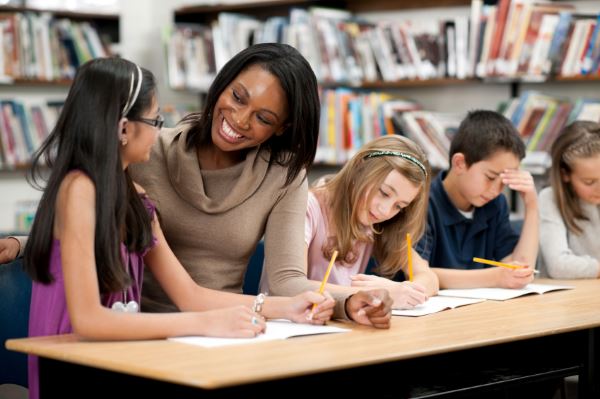
Educators are required to wear many hats, from creating and implementing a full class course load, to facilitating competence with emerging technologies and teaching social-emotional skills.
While facilitating competency in math, reading, and other subjects is certainly high on the list of teacher priorities, teaching social and emotional skills is also crucial to student success. This area may be less structured and defined than other class topics, but it’s still important for teachers to be tuned in to their students’ emotional health so they can find ways to incorporate social and emotional learning in the classroom.
Research around social-emotional skills
Studies show there is a strong correlation between social skills, emotional skills, and a child’s ability to learn. Some researchers even believe that cognitive development and achievement accounts for just 50 percent of success in school, with social and emotional development accounting for the other 50 percent.
Any number of factors can affect a child’s social and emotional development, and teachers must be flexible in finding the best ways to help each student and the class as a whole. Social issues such as poverty, neighborhood violence and family trauma can certainly affect student performance while in school. Teachers must be adept at noticing the warning signs of possible problems outside of class so that they may take these issues into consideration when teaching these students from day to day.
Empathy matters
One school of thought focuses on empathy as a pivotal point of development in children who go on to thrive socially and emotionally. Empathy is innate in most humans but can be developed even more through specific training and teaching practices. One example would be to bring a baby into the classroom, then ask students to consider and talk about the baby’s experience of being in the classroom. Have them talk about how they think the baby might be responding to its environment.
As students brainstorm ideas, the teacher can help students to describe and name the baby’s possible feelings and emotions. Having students focus on the baby, its vulnerable nature and possible fears and experiences can be a very effective way to help students think about and practice empathy toward others. As they do, they naturally become more self-aware while developing an awareness that everyone around them is having feelings and experiences that may (or may not) be different from their own.
Fostering social and emotional development
Another benefit of empathy studies is that children who learn to be empathetic will naturally behave with less aggression. It is an established fact that when students develop good emotional literacy, this enables them to talk more openly about their feelings and process them, leading to less likelihood of acting out. Whether in urban or rural areas, these principles are universal in children and can make a difference in any school.
Unfortunately, many cities have areas and neighborhoods that are plagued by racial tensions, class divisions, poverty and high levels of violence. These conditions have left many students feeling frustrated, traumatized and angry, and they bring these energies into the classroom. In some cases, students lack the capacity to deal productively with their feelings, and this adversely affects their social development. They may act out inappropriately or shut down completely if they become too uncomfortable or overwhelmed.
While these issues may not be completely solved in the classroom, taking time out of each week in school to focus on social and emotional development can go a long way in relieving some of the tension these students face and carry around with them each day.
Ultimately, one of the primary benefits of building emotional and social skills in schools is that students are better able to focus on studying and learning. When students feel safe, emotionally supported, and socially connected, they are far better able to learn than when these aspects of their development are ignored. Teaching social and emotional skills may not be the top priority of educators, but it is definitely a valuable part of any holistic and well-rounded curriculum.
Check out these additional resources on social-emotional learning:
- Getting Parents’ Feedback Early Helps Teachers All Year
- Social Emotional Learning: The Magic of Circle Talk
- Recess Social Skills: Building Connection Through Buddy Benches
- How Can Teachers Cultivate Social Connection and Empathy in the Classroom?
- This is a Student’s Brain on Trauma
- Essential Strategies for Managing Trauma in the Classroom
- Helping Teens Manage Drama and Trauma of Adolescence
Categorized as: Tips for Teachers and Classroom Resources
Tagged as: Engaging Activities
